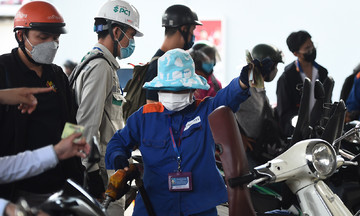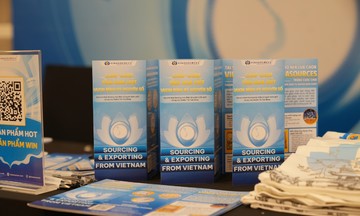In Luc Ngan (Bac Giang), Vietnam's largest lychee growing region, farmgate prices range from 8,000 to 20,000 VND per kg, depending on the variety. Certain batches with designated growing area codes and attractive packaging fetch higher prices from traders, at 25,000-30,000 VND per kg. However, these prices are still significantly lower than at the start of the season when they reached 35,000-40,000 VND.
Mr. Luc, a long-time lychee farmer in Luc Ngan, said that this year his family's orchard had a good harvest with high-quality fruit, but prices have dropped by a third compared to last year, to around 10,000 VND per kg. With nearly one hectare of lychees ready for harvest, Mr. Luc estimates that if prices don't increase, his family will only break even or even lose money.
Many farmers calculate the production cost of one kg of lychees at 8,000-12,000 VND, including fertilizer, pesticides, labor, and packaging. With the current selling price below 10,000 VND, many households are barely making a profit, or even losing money if they can't sell their produce quickly.
In Thanh Ha (Hai Duong), another well-known lychee growing region in northern Vietnam, Mr. Giang, a specialized lychee farmer, also reported a sharp drop in prices in recent days. Earlier in the season, the early harvest fetched 30,000-35,000 VND per kg. But during the main harvest season, lychee production has increased significantly, while domestic consumption and export demand have slowed down as many other tropical fruits are also in season.
 |
Lychees are displayed at a store on Le Duc Tho Street, Go Vap District (TP HCM). Photo: Thi Ha |
Lychees are displayed at a store on Le Duc Tho Street, Go Vap District (TP HCM). Photo: Thi Ha
The decline is not limited to the domestic market; lychee exports in the first 4 months of this year have also decreased sharply. According to customs data, export revenue for this fruit reached only 3.5 million USD, down 26.6% year-on-year. The US, Taiwan, and China increased their imports of Vietnamese lychees by 25-116%, but 17 other markets reduced their purchases, with the Netherlands down 84% and France down 40%.
The Vietnam Fruit and Vegetable Association attributes the export decline to several factors: the later lychee harvest this year, the limited supply during the early season, and the increased transportation costs due to tensions in the Middle East.
This year, China increased its imports of Vietnamese lychees to meet domestic demand, while their own domestic supply, with its consistent quality and attractive appearance, is prioritized for export to international markets. This puts Vietnamese lychees under increased competitive pressure in many markets, especially since investments in quality and presentation have been lacking.
Vietnam's total lychee production this year is estimated at 250,000 tons, a 25% increase compared to last year, with Bac Giang alone accounting for 100,000 tons. However, weak purchasing power has led to a significant price drop. The province has only sold about 13,000 tons, mostly from the main harvest. On average, 2-3 containers of lychees from Bac Giang are exported daily through Lang Son and Lao Cai border gates to China, the EU, the US, and ASEAN.
In traditional markets in southern Vietnam, the retail price of lychees ranges from 25,000-40,000 VND per kg, a nearly 30% decrease compared to early June, and only half the price of the same period last year.
Ms. Hoang Anh, a lychee trader, said that the abundant harvest this year is the reason for the low prices. However, the lychees sold at 3,000-4,000 VND per kg are lower-grade fruit, either blemished or from the late harvest.
To address the situation of "bumper crop, falling prices," the Bac Giang Department of Industry and Trade is promoting deep processing models such as drying, juicing, and freezing to diversify sales channels. Mr. Le Ba Thanh, Deputy Director of the Bac Giang Department of Agriculture and Environment, believes that increasing the proportion of processed lychees will help stabilize product value when fresh fruit sales face difficulties.
The agency is also encouraging cooperatives to proactively expand distribution, reducing reliance on seasonal traders. In addition, the local government is organizing a program to introduce Luc Ngan lychees to consumers in Hanoi and TP HCM from 24/6. The program aims to connect domestic consumption and promote Vietnamese agricultural products to urban consumers.
Thi Ha












